Recent observations from X-ray telescopes, radio timing of pulsars, and gravitational wave observations, have provided several constraints on the masses and radii of neutron stars. Major efforts are being devoted to inferring the underlying pressure-energy density relation, often called the equation of state (EOS), of dense matter. This involves the inversion of the TOV relations of neutron...
A central problem of modern physics research is the solution to QCD in the non-perturbative regime. One method of testing QCD in this low-energy region is by measuring certain structure constants of hadrons --- called polarizabilities --- that show particular promise of allowing a direct connection to the underlying quark/gluon dynamics through comparison to modern QCD-inspired model...
Correlated electron-positron pairs (dielectrons) present a unique probe to study the properties of the medium created in relativistic heavy-ion collisions. They are produced in all stages of the collision and leave the system without loss of information as they do not interact strongly with the medium. However, at LHC energies, the thermal dielectrons emitted in the early stages of the...
The Apparatus for Mesons and Baryon Experimental Research (AMBER, NA66) is a high-energy physics experiment at CERN’s M2 beam line. Its broad physics program extends beyond 2032. Several upgrades of the spectrometer are planned for the medium and long-term AMBER program among those the existing Multi-Wire Proportional Chambers (MWPCs) will be replaced to address their structural aging and...
Particle therapy in cancer treatment permits, compared to conventional X-ray therapy, to deliver a more conformal dose to the tumor while sparing healthy tissues. Nevertheless, the primary beam and target fragmentation lead to the production of lighter fragments, which may contribute to undesired dose in healthy tissues. Dose calculations in particle therapy rely on high-performance algorithms...

